Jul
27
2009
Genetically modified bacteria are already a common and useful component of chemical production. Many drugs, food additives, and industrial chemicals are churned out by engineered bacteria in large vats. Bacteria are little protein and chemical factories and we put them to good use.
But engineering a strain of bacteria to do exactly what we want is laborious and expensive. Traditionally engineers have tweaked one or two genes at a time and then looked for the results. But the production of many substances by bacteria may be controlled by 20 or more genes, and so the permutations of various mutations are enormous – too many to test individually.
But now genetic engineers have developed a new technique known as MAGE – multiplex automated genome engineering. What they do is to essentially evolve bacteria with optimized or at least greatly improved production of the substance of interest. The technique causes bacteria to rapidly mutate – causing thousands of mutations and billions of different strains.
 Continue Reading »
Continue Reading »
Mar
12
2020
 We like extremes, partly because they help define the borders of reality. It helps our mental model of the world when the know the biggest, smallest, hottest, lightest, or fastest of something. It’s also just fascinating to see how extreme some things can get. For this reason there has been a fascination with which dinosaur is the biggest – how big did these animals get. The record is currently held by Argentinasaurus, a long-necked sauropod, weighing between 77 and 110 tons. Meanwhile, the record for the smallest known dinosaur is microraptor, a bird-like dinosaur only 40 cm long. Well, that is until the latest discovery.
We like extremes, partly because they help define the borders of reality. It helps our mental model of the world when the know the biggest, smallest, hottest, lightest, or fastest of something. It’s also just fascinating to see how extreme some things can get. For this reason there has been a fascination with which dinosaur is the biggest – how big did these animals get. The record is currently held by Argentinasaurus, a long-necked sauropod, weighing between 77 and 110 tons. Meanwhile, the record for the smallest known dinosaur is microraptor, a bird-like dinosaur only 40 cm long. Well, that is until the latest discovery.
Scientists report the discovery of the head of a bird-like dinosaur trapped in amber. The species has been named Oculudentavis khaungraae and is about the size of a bee hummingbird, the smallest living bird. The specimen is trapped in amber from Myanmar, and is dated at 99 million years old. The amber preserved some soft tissue, including its tongue. The specimen is interesting on multiple levels.
First, it reflects the extreme of vertibrate miniaturization. It’s difficult to cram all the sensory organs into a tiny skull, and species that evolve to become so small have to find solutions. In this case the eye socket anatomy appears different than hummingbirds and other tiny birds. Rather than a rim of bone, the socket is more spoon-shaped. The anatomy also suggests a small opening for light, which further implies the species was diurnal.
The mouth sports a surprising number of teeth, making the creature look like a predator. At that size is likely fed on insects. So we have a bird-like dinosaur the size of a tiny hummingbird that hunted insects during the day. The anatomy, such as fusion of the skull, also suggests this was an adult, so not just a juvenile specimen to explain its small size.
Continue Reading »
Jul
28
2017
 As with most things, the answer is more complicated than it may at first seem.
As with most things, the answer is more complicated than it may at first seem.
Up to now the official answer was simple – always finish prescribed courses of antibiotics. Stopping early, it was argued, could increase the risk of antibiotic resistance. The idea is that bacteria which are a little resistant to the antibiotic will survive longer, and if they are not wiped out by completing the course, the partially resistant bugs will then reproduce, with random mutations leading to greater resistance. The antibiotics are essentially a selective pressure leading to resistance.
This makes sense, and is almost certainly true with certain chronic infections, such as tuberculosis.
A new review, however, suggests that we cannot apply this rule simplistically to all infections. It depends on the type of bacteria involved.
Continue Reading »
May
30
2017
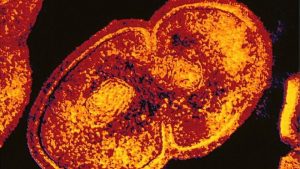 Imagine a day where you get a bacterial infection, and the doctors tell you that there is no antibiotic which is effective against this bug. It is resistant to everything we have. They can give you supportive care, but the infection just has to run its course and may be fatal. For this reason hospitals have to take extreme measures to prevent the spread of infection – disinfecting and wearing disposable protective garments each time they enter a patient’s room. This is already the case for patients with certain kinds of exposures and infections.
Imagine a day where you get a bacterial infection, and the doctors tell you that there is no antibiotic which is effective against this bug. It is resistant to everything we have. They can give you supportive care, but the infection just has to run its course and may be fatal. For this reason hospitals have to take extreme measures to prevent the spread of infection – disinfecting and wearing disposable protective garments each time they enter a patient’s room. This is already the case for patients with certain kinds of exposures and infections.
This is a serious concern, not hype like most of the doomsday scenarios the press likes to scare you with. Bacteria are slowly (or sometimes not that slowly) evolving resistance to our antibiotics. Even worse, bacteria have loops of DNA called plasmids which they can share with each other. Those plasmids might contain the code for resistance to one or more antibiotics. The more we use antibiotics, the more selective pressure there is for resistance.
The two main things we need to do to avoid a “post-antibiotic era” includes first uses antibiotics as smartly as possible. Use them only when necessary, use narrow-spectrum antibiotics when possible, and complete all courses of antibiotics so all the bacteria are killed.
The second thing we need to do is develop more and better antibiotics. Attacking bacteria using new mechanisms is especially useful. Ideally these antibiotics would be resistant to resistance – they would attack a vulnerability in the bacteria that they cannot easily evolve a defense against.
Continue Reading »
Dec
01
2016
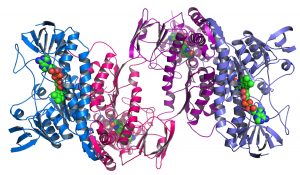 In September I wrote an article about a recent experiment at Harvard Medical School in which they created a very large agar plate in order to visualize bacterial colonies evolve drug resistance over time. I was primarily responding to Michael Behe’s argument that this experiment did not show evolution but “devolution.”
In September I wrote an article about a recent experiment at Harvard Medical School in which they created a very large agar plate in order to visualize bacterial colonies evolve drug resistance over time. I was primarily responding to Michael Behe’s argument that this experiment did not show evolution but “devolution.”
Recently Cornelius Hunter over at Evolution News and Reviews (a propaganda blog of the Discotute) wrote a response to my article. Hunter’s response is yet another example of how creationists engage in motivated reasoning and fail to either understand evolution or meaningfully engage with the scientific community. In fact, I found Hunter’s article to be largely incoherent, which is common because creationists are not trying to formulate a coherent scientific theory. They are just trying to provide cover for their ideological beliefs by creating doubt and confusion.
The first actual point I think I can extract from Hunter’s article is that the changes to the bacteria seen in the Harvard experiment were not actually evolution, just adaptation. He writes:
What Novella does not acknowledge, however, is that bacteria adaptation research, over several decades now, has clearly shown non-evolutionary change. For instance, bacterial adaptation has often been found to be rapid, and sensitive to the environmental challenge. In other words, when we look at the details, we do not find the evolutionary model of random variation slowly bringing about change, but rather environmentally directed or influenced variation.
That is not evolution. And indeed, the Harvard experiment demonstrated, again, very rapid adaptation. In just ten days the bacteria adapted to high doses of lethal antibiotic. As one of the researchers commented, “This is a stunning demonstration of how quickly microbes evolve.”
True, it is “stunning,” but “evolve” is not the correct term. The microbes adapted.
This is one common intellectual trick used by creationists – shift around your definitions as needed in order to manufacture apparent contradictions or at least confusion. Hunter is not working from a coherent operational definition of evolution. He gives no indication that he understands evolutionary theory, but that is hard to know through the fog of motivated reasoning.
Continue Reading »
May
26
2016
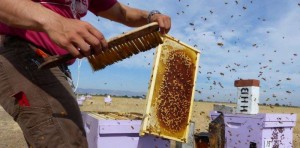 Yesterday I saw a bumper sticker that stated, “Save the Bees, Buy Organic.” Of course, a bumper sticker is not the place for a nuanced or thorough treatment of a complex topic. It is a venue suitable for simplistic slogans.
Yesterday I saw a bumper sticker that stated, “Save the Bees, Buy Organic.” Of course, a bumper sticker is not the place for a nuanced or thorough treatment of a complex topic. It is a venue suitable for simplistic slogans.
People like simple narratives, but reality rarely conforms to our desires. This has led to a frequent reminder, popularized by Ben Goldacre, that you will often find the situation (pretty much whatever situation you consider) is more complex than it might at first seem. That is a good rule of thumb – it is fair to assume as a default that any topic is more complex than your current understanding, or how it is being presented in the media, or how it is understood in the public consciousness.
Complex and ambiguous situations, like the fate of our pollinators, become a convenient Rorschach test for ideology. People tend to impose on this complex and not fully understood situation whatever simplistic narrative suits their beliefs and values, like the notion that organic farming will somehow save the bees. Continue Reading »
Jan
22
2015
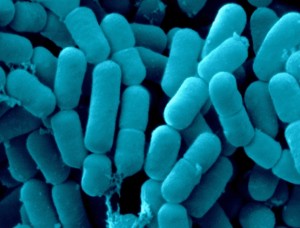 In Jurassic Park the scientists who created the dinosaurs from DNA trapped in amber included what they called the “lysine contingency.” They engineered the dinosaurs so that they could not manufacture the amino acid lycine. The dinosaurs could only survive if they were fed lysine by the park staff. Without the supplement they would quickly fall into a coma and then die.
In Jurassic Park the scientists who created the dinosaurs from DNA trapped in amber included what they called the “lysine contingency.” They engineered the dinosaurs so that they could not manufacture the amino acid lycine. The dinosaurs could only survive if they were fed lysine by the park staff. Without the supplement they would quickly fall into a coma and then die.
This contingency was a fail safe if any dinosaur ever escaped from their designated areas, or from the park itself. However, the lysine contingency failed. Dinosaurs could survive by eating lysine rich foods, like chickens or soya beans, or other dinosaurs.
Biologists have now done Jurassic Park one better. Genetically modified bacteria are extremely useful. Bacteria have been engineered to produce drugs, like insulin, or to eat up spilled toxins or petroleum products, or to make synthetic fuel. There is always a concern, however, that such a synthetic bacteria could get out into the wild with unpredictable effects. Physical containment strategies are therefore used to minimize the chance of this happening.
Research teams at Harvard and Yale have developed a new strategy of containment. The genetic code shared by all life involves a language of 3 nucleotides, of which there are 4 types, resulting in 64 different combinations. Each three letter combination codes for an amino acid, of which there are 20 used by living organisms. This allows for some redundancy, with each amino acid having 2-3 different codes. There are also some regulatory codes, such as stop codons – three letter combinations that tell the machinery to stop making the protein at that point.
Continue Reading »
Jan
09
2015
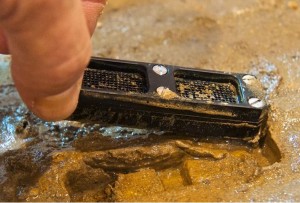 Humans have a massive footprint on our ecosystem. Enough so that we have to think carefully about anything we do on a large scale, such as agriculture, industry, shipping (because of invasive species), and using drugs to fight bacterial infections.
Humans have a massive footprint on our ecosystem. Enough so that we have to think carefully about anything we do on a large scale, such as agriculture, industry, shipping (because of invasive species), and using drugs to fight bacterial infections.
The development of antibiotic resistance is a particular worry of mine, and one that I feel does not get proportional attention in the media. It is quite possible that in the future more people will die from antibiotic resistant bacteria than global warming, food shortages, or disrupted ecosystems (depending on how each of these things develop).
We are already seeing more deaths from drug-resistant bacteria, longer hospital stays, and greater costs. I have seen this change during my career. When I round in the hospital I now have to don protective garments before entering many patient rooms because they are infected or even just colonized with a resistant strain of bacteria.
There is no way around the fact that were are engaged in a war with the subset of bacterial species on this planet that are capable of infecting humans. We have been winning for a while, but the bacteria are now rallying.
Continue Reading »
Feb
18
2014
The issue of genetically modified food is an excellent one for skeptics – it is a complex question that mostly revolves around scientific data, popular beliefs are rife with myths, misconceptions, and ideology, there are active and well-funded campaigns of misinformation regarding GM, and it is a hugely important topic for society. The topic is too big to cover in one blog post, which is why I have been writing about it sporadically to cover different angles of this issue (see here, here, here, and here). I also was recently interviewed for Mother Jones, with the result in both article and podcast form. The comments after the article are especially revealing.
Much of the discussion around GMO involves the two most common GM traits, pesticide(Bt) production and herbicide resistance. While these traits can be very useful when used intelligently, the potential for GM technology is perhaps much greater in other realms, including disease resistance. Late blight alone, a disease that affects potatoes and tomatoes, is estimated to cost 3-5 billion dollars per year in the US, Europe, and developing countries, through the cost of fungicide use and crop loss.
A three year trial of a new GM potato variety has just concluded, demonstrating impressive resistance to late blight. The researchers took a gene (Rpi-vnt1.1) isolated from a wild relative of potato, Solanum venturii, and placed in into the potato variety known as Desiree. The results:
Continue Reading »
Oct
17
2013
People generally worry too much and about the wrong things. The media exploits dramatic risks for sensational headlines and exciting narratives, but rarely put risks into a useful context.
Meanwhile, there are some real things to be worried about out there. One thing that has long been on my short list is the coming post-antibiotic era.
Antibiotics have dramatically improved human life and life-expectancy. I know many people who would likely be dead without them. The are one of modern medicines greatest success stories. But they have a critical weakness – evolution.
The antibiotic era started an evolutionary arms race with the pathogenic bacteria they kill or inhibit – and the bacteria are winning. Antibiotics work through a number of mechanisms that interfere with the cellular function of prokaryotes, but not eukaryotes, so bacteria are affected while host cells are unharmed.
Continue Reading »


 We like extremes, partly because they help define the borders of reality. It helps our mental model of the world when the know the biggest, smallest, hottest, lightest, or fastest of something. It’s also just fascinating to see how extreme some things can get. For this reason there has been a fascination with which dinosaur is the biggest – how big did these animals get.
We like extremes, partly because they help define the borders of reality. It helps our mental model of the world when the know the biggest, smallest, hottest, lightest, or fastest of something. It’s also just fascinating to see how extreme some things can get. For this reason there has been a fascination with which dinosaur is the biggest – how big did these animals get.  As with most things, the answer is more complicated than it may at first seem.
As with most things, the answer is more complicated than it may at first seem. Imagine a day where you get a bacterial infection, and the doctors tell you that there is no antibiotic which is effective against this bug. It is resistant to everything we have. They can give you supportive care, but the infection just has to run its course and may be fatal. For this reason hospitals have to take extreme measures to prevent the spread of infection – disinfecting and wearing disposable protective garments each time they enter a patient’s room. This is already the case for patients with certain kinds of exposures and infections.
Imagine a day where you get a bacterial infection, and the doctors tell you that there is no antibiotic which is effective against this bug. It is resistant to everything we have. They can give you supportive care, but the infection just has to run its course and may be fatal. For this reason hospitals have to take extreme measures to prevent the spread of infection – disinfecting and wearing disposable protective garments each time they enter a patient’s room. This is already the case for patients with certain kinds of exposures and infections. In September
In September  Yesterday I saw a bumper sticker that stated, “Save the Bees, Buy Organic.” Of course, a bumper sticker is not the place for a nuanced or thorough treatment of a complex topic. It is a venue suitable for simplistic slogans.
Yesterday I saw a bumper sticker that stated, “Save the Bees, Buy Organic.” Of course, a bumper sticker is not the place for a nuanced or thorough treatment of a complex topic. It is a venue suitable for simplistic slogans.






